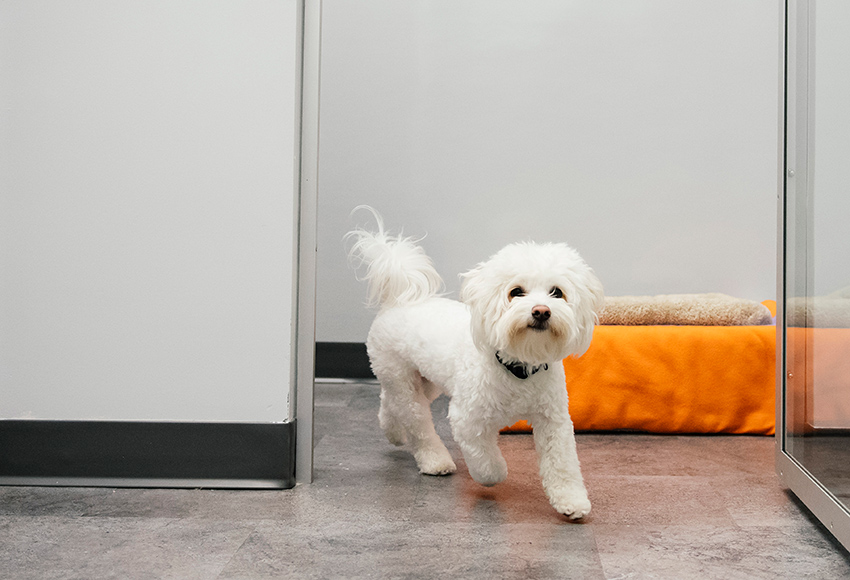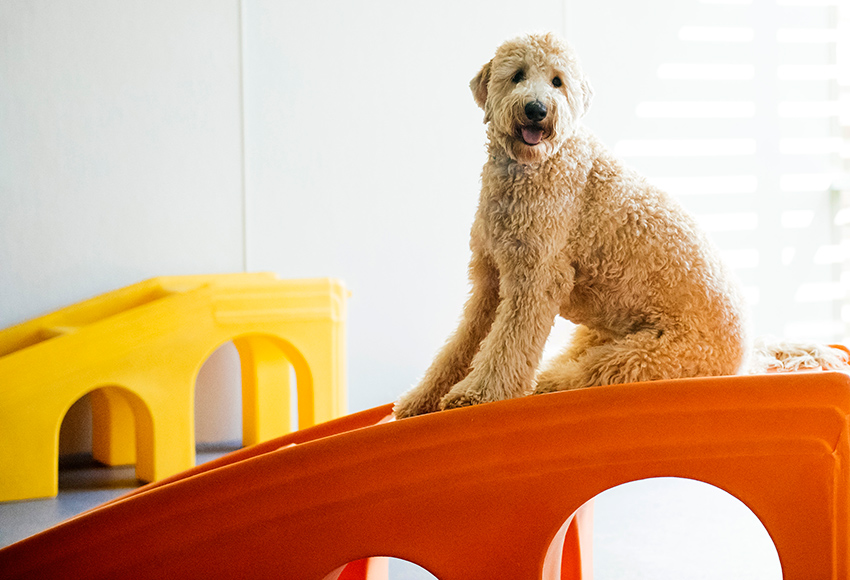Summer Safety for Dogs in Alexandria, VA

Imagine a bright summer’s day in Alexandria, Virginia, with lots of bustle on the streets and dogs playing happily outside. In the middle of this chaotic circumstance, it is imperative that we put our beloved friends’ safety and well-being first. It is crucial to shield our dogs from the possible risks of summer as the temperatures rise and the season progresses.
We at Dogtopia of Alexandria know how important it is to ensure that every dog has a safe summer. This post will discuss frequent summertime dangers to dogs and offer crucial safeguards to keep them safe and content. Come along with us as we make our way through Alexandria’s sunny streets, ensuring every dog has a fun and safe summer.
Summer Hazards for Dogs
There are following summer hazards for dogs:
- Heatstroke
- Dogs are at risk for heatstroke in the summer, particularly in hot and muggy areas like Alexandria, Virginia. Heatstroke can occur when a dog’s core temperature rises quickly due to an inability to regulate its body temperature efficiently. This can happen if dogs are left in vehicles, exercise hard in the heat, or outside without access to water or shade. Serious repercussions from heatstroke might include organ failure and death. When a dog exhibits symptoms of heat stroke, such as heavy gasping for air salivation, sluggish vomiting, or collapse, it’s critical to identify it, act quickly to cool the animal down, and contact a veterinarian.
- Dehydration
- Another frequent risk that dogs face in the summer is dehydration. In hot weather, dogs can easily become dehydrated, particularly if they don’t have access to enough fresh, clean water. Dehydrated dogs may exhibit black urine, lethargy, sunken eyes, dry gums, and lack of appetite. Dogs should always have availability to water and be constantly watched for symptoms of dehydration, especially while participating in outdoor activities (Johnson, 2019).
- Sunburn
- Dogs are prone to sunburn, especially those with light-colored fur or areas of exposed skin on their bodies like their belly, ears, or nose. Extended exposure to ultraviolet (UV) radiation from the sun can raise the possibility of skin cancer and result in excruciating sunburns.
- It’s best to keep dogs out of the sun throughout peak times, provide them access to shady locations, and apply pet-safe sunscreen to sensitive parts of their bodies to prevent sunburn.
- Parasites and Pests
- Dogs are more vulnerable to the health dangers posed by fleas, ticks, and mosquitoes during the summer months. Diseases including ehrlichiosis, anaplasmosis, and Lyme disease can be spread by fleas and ticks, and heartworm disease can be spread by mosquitoes (Davis, 2018).
Preventive Measures for Summer Safety
Here are following preventive measures for summer safety of dogs:
- Provide Ample Water
- Providing dogs with a constant supply of fresh, clean water is one of the most important preventive measures for summertime safety. Particularly in hot and muggy weather, dogs need to stay hydrated in order to maintain body temperature regulation and avoid dehydration. To promote drinking, dog owners should constantly refill their bowls with water and think about setting up several stations for water inside the house and outside.
- Limit Outdoor Activity
- The warmest portions of the day should be avoided when exercising outside to reduce the danger of heatstroke and overheating. Rather, plan walks and outdoor games for the cooler hours of the day, such as the morning or evening, when the sun isn’t as strong. This lessens the chance of illnesses caused by heat in dogs and helps keep them from getting too hot.
- Provide Shade and Shelter
- Dogs must have access to shaded areas and cover from the sun in order to avoid scorching and heatstroke. Dog owners should make sure that their outside spaces have places for their dogs to get shade from the sun, which might include plants, pergolas, raincoats, or dog houses. Dogs can also stay cool in warm weather by being exposed to indoor spaces with air conditioners or fans.
- Use Parasite Prevention
- Veterinarian-recommended preventive products are essential for shielding dogs against parasites, including fleas, ticks, and mosquitoes. Preventives against ticks, fleas, and heartworms help shield dogs against the diseases these pests can spread. When it comes to flea, tick, and insect repellent products, dog owners should heed their veterinarian’s advice and make sure the medications are used properly and with regularity throughout the summer.
Summer Care for Specific Breeds:
- Breeds with a flat face, such as Bulldogs as well as Pugs, are more likely to suffer from heatstroke. In warmer weather, keep kids inside in cool environs and steer clear of physically demanding activities.
- Senior Dogs: Dogs who are older may find it difficult to control their body temperature. Shorter walks and more frequent rests in covered areas should be incorporated into their training regimen. Keep a sharp eye out for symptoms of heat fatigue in them.
- Dogs who are overweight are more likely to get sick from the heat. Keep an eye on their weight and gradually lose it with a low-impact workout and nutrition. Deliver cool indoor rest areas and an abundance of water.
Conclusion
In summary, it is critical to give dogs’ summer safety top priority in order to protect them during the warmer seasons in Alexandria, Virginia. Dog owners can help safeguard their furry friends from diseases associated with heat and other summer hazards by putting preventive measures into place, such as giving them enough water, restricting their time outside, and offering care that is appropriate to their breed or circumstances.
Every dog may have a safe and happy summer with the right planning and care. I urge readers to adopt the recommended safety precautions and to provide any further advice they may have for keeping dogs safe in the summertime. By working together, we can build a community that is dedicated to the welfare of our dog friends.
References
● Smith, E. (2020). Heatstroke in Brachycephalic Breeds: Risks and Prevention. Journal of Veterinary Medicine, 15(2), 78-82.
● Johnson, M. (2019). Senior Dog Care During Hot Weather. Alexandria Pet Gazette, 5(3), 34-37.
● Davis, R. (2018). Managing Heat-Related Illness in Overweight Dogs. Veterinary Medicine Today, 22(4), 56-61.






